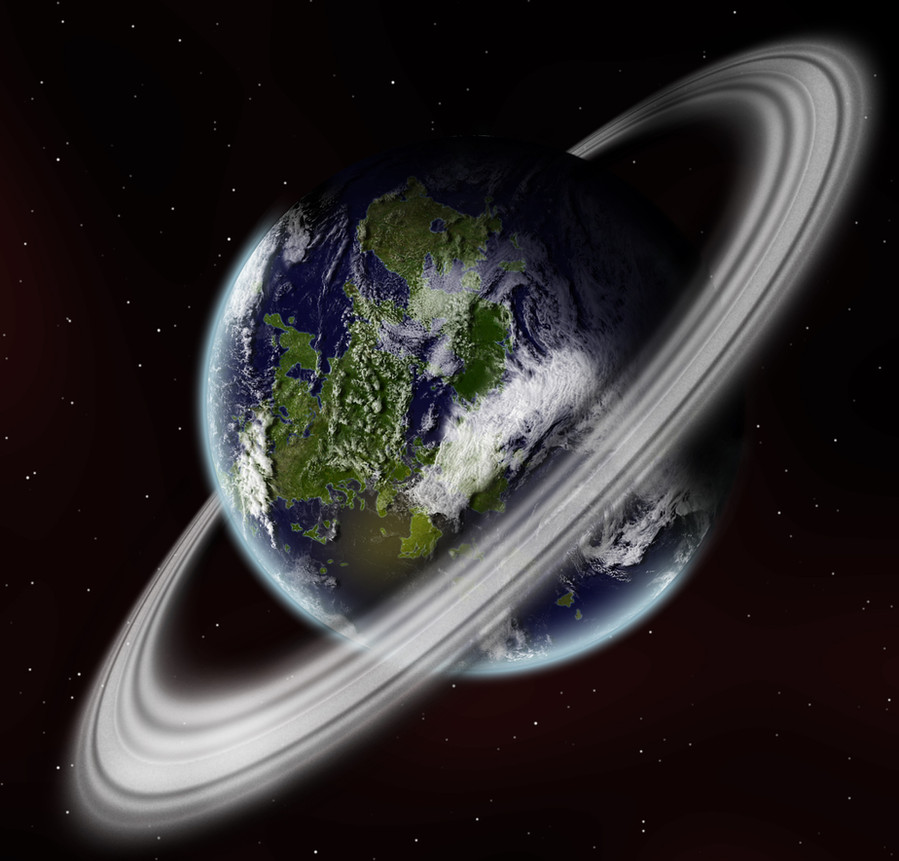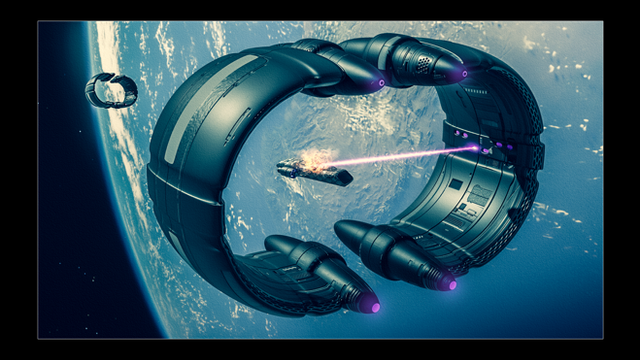HOME | DD
 ArtOfAnrach — POTW 12: Protectorate
ArtOfAnrach — POTW 12: Protectorate

Published: 2014-06-07 20:46:25 +0000 UTC; Views: 2778; Favourites: 53; Downloads: 0
Redirect to original
Description
As I said in my last Planet of the Week, since I didn't get one in last week there will be two this week, so here is the second on as promised. For this one I used this ring tutorial by .I'm not entirely pleased with how they came out, but they look much better than any other attempts I've made at rings and I'll definitely be using this technique for making them from now on, so hopefully I'll improve with practice.
This world is called Nidaba, named for the Sumerian goddess of writing, learning, and the harvest. The native Nidabans, true to their namesake, were a promising species of small, downy theropod-like appearance that had begun to transition from a pastoral way of life into one of sedentary civilization. They subsisted on the beasts they had followed and herded for thousands of years and tall, starchy plants not unlike bamboo that served as both food and building material. They built great cities with bricks of mud and clay, and they adorned their temples with pictographic symbols as they dabbled in the concept of writing. Though there was occasional conflict between tribes and cities Nidaba was blessed with continents rich in fresh water and fertile soil, and for the most part no group of Nidabans went with too little of any one resources. Even when crops failed the harvest would almost always produce enough to survive the warm planet's mild winters. As the great ring that filled their skies with beauty and minds with awe drew the eyes of the Nidabans up to the stars their prosperity drew the ambitious eyes of others down onto their world. A race known simply as The Invaders--a secretive and reclusive species that is infamous for sacking and conquering worlds all throughout the known galaxy--descended upon Nidaba and rapidly took over the planet city by city. Most settlements surrendered without resistance at being confronted with what seemed to them to be god-like powers of destruction. Cities that did resist were utterly eradicated, and the surviving populace was taken as slaves for use in off-world labor camps or as soldiers for other conquests.
The Invaders never do any of the fighting themselves, instead they conquer worlds and then levy an army of slaves to use in campaigns against other species far removed from the world they came from. In fact an actual Invader has never been seen, and it is assumed they never leave their homeworld (if they even have one). Each conquered world is treated differently, and only those worlds that prove their loyalty to the Invaders' empire, known as "The Great Will," are given equal status with the Invaders themselves. Conquered worlds are often plundered for resources and have Invader culture forced upon them, and if they resist they are severely punished. Those few worlds that actively rebel against the Invaders are wiped clean of intelligent life entirely and given to trusted members of the Will for colonization. Planets that join willingly are regarded as second-class citizens until proving their loyalty, but are treated as respected allies unless they give the Invaders reason to believe otherwise. Nidaba was one of the latest worlds to be conquered, and the primitive populace was left under the rule of a warlord from one of the most trusted members of the Will. Under this arrangement the Nidabans were left mostly to their own devices since they were practically no threat, but much of their crops and the planet's mineral wealth was regularly shipped off-world. For the first time the Nidabans were seeing widespread famine, and the contamination of the ecosystem by alien organisms brought by the colonists who began to establish settlements in the less populated regions of Nidaba. Their culture was devastated just as much as their planet as the warlord instituted a policy of reeducation aimed at making the Nidabans into a subservient race devoted entirely to providing food for their new "gods."
This occupation lasted for thirty years when the Invaders came into conflict with the Coalition of Independent Worlds. Though the Invaders were well known for their conquests the truth of the matter was that The Great Will was less an empire than it was a group of bullies picking on the smaller kids. Technologically they were vastly inferior to the major powers of the region such as the Coalition and United Earth Federation, and their military structure, while excellent for maintaining prolonged occupations of primitive worlds, was completely infeasible for use in a sustained military conflict against technologically superior opponents. The Invaders put up a surprising defense against Coalition forces, using a scorched earth strategy of sacking their less important systems and falling back deep into their own territory where they could dig in. The Coalition paid heavily for every kilometer of every planet they captured, and the inhabitants of occupied worlds often paid even more heavily before they could be liberated by the Coalition. Unfortunately for the Invaders, however, a war cannot be won without going on the offensive and aside from a few daring raids on Coalition border worlds they spent most of the war trying to hold the line. Surrounded and under siege the forces of The Great Will eventually capitulated and agreed to Coalition dictated terms. Many of the planets liberated by the Coalition were made into protectorates or granted independence, and Nidaba became one of the former. Their problems are legion, but the Coalition is doing all it can to help them. The 101st Ranger Brigade under the command of Colonel Sanya El-Ghazzawy and supported by elements of the 43rd Starfleet continues to fight colonial holdouts who refuse to agree to the terms of the treaty and give up their homes. They also serve as a peacekeeping and engineering force to help stabilize the questionable political and social status quo of the ravaged Nidaban civilization and aid in reconstruction efforts. Civilian groups such as charities and relief organizations are also sending thousands of volunteers to help rebuild cities, treat the sick and injured, and educate the Nidabans. Great effort is being put into helping them restore their culture while guiding them on the path towards rapid modernization. The Nidabans are leery of more aliens influencing them, and tensions are very high amongst them right now, but most see that their way of life has been forever changed and that they will need to adapt. Even so they are not entirely convinced that the Coalition is completely benign in its actions, as they have appointed a provisional government that, while made up entirely of Nidabans, is a Coalition-friendly representative democracy that seems hell bent on strengthening Nidaba's ties to the Coalition. Most are convinced that Coalition membership is inevitable and may not entirely be their choice, and given that the Coalition does suffer from food shortages that a modernized Nidaba could help alleviate, they may not be wrong...
Related content
Comments: 7

if Earth did have rings (i know this isn't Earth, it's called "Nidaba" cause i read the description) wouldn't they have an effect on the planet in some way?
👍: 0 ⏩: 0

Captured and held my interest from beginning to end. Always a good thing.
👍: 0 ⏩: 0

Nice story. Are all the planets you've been making in this universe?
👍: 0 ⏩: 1

Usually, yes. I've never really put too much deep thought into it until recently though, so there are a few continuities issues. Most of the issues are from much older works that never got any attention anyways, so they're negligible.
👍: 0 ⏩: 1

Okay. I like this universe.
👍: 0 ⏩: 1

























